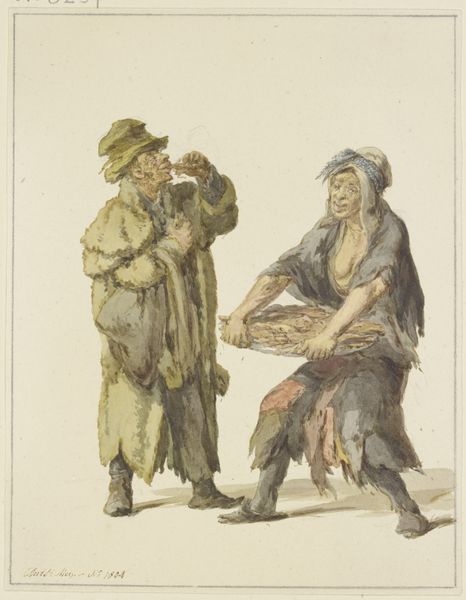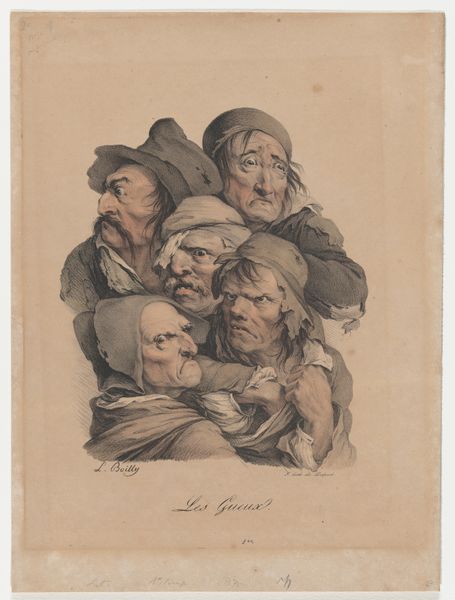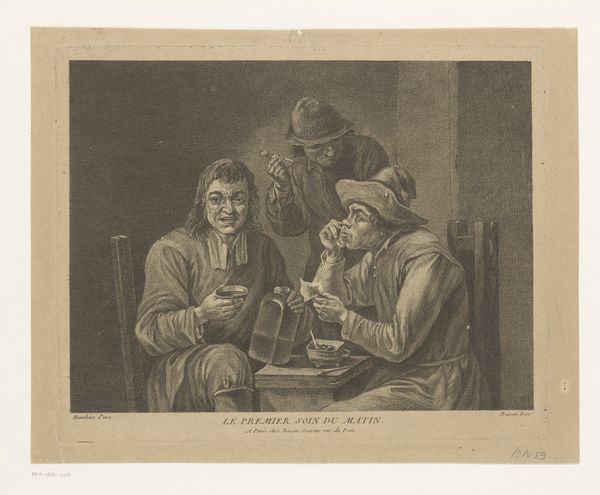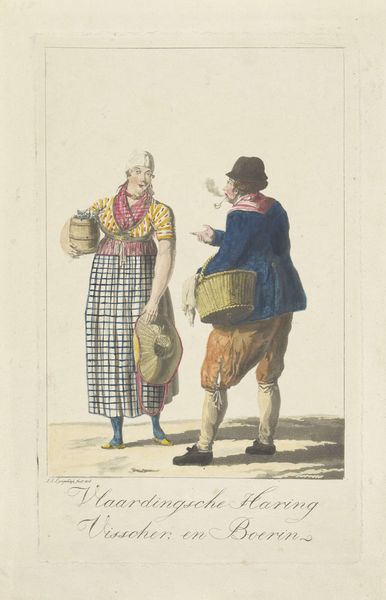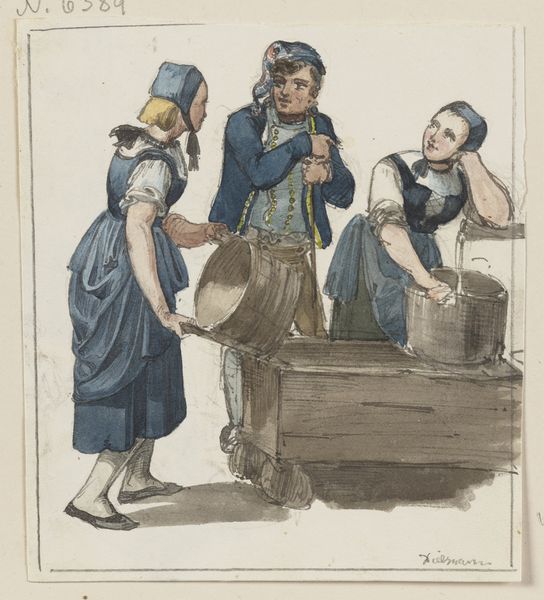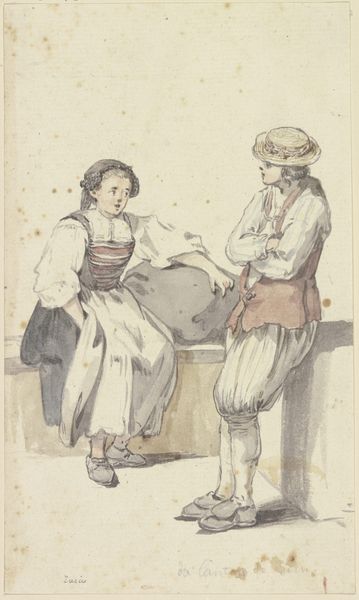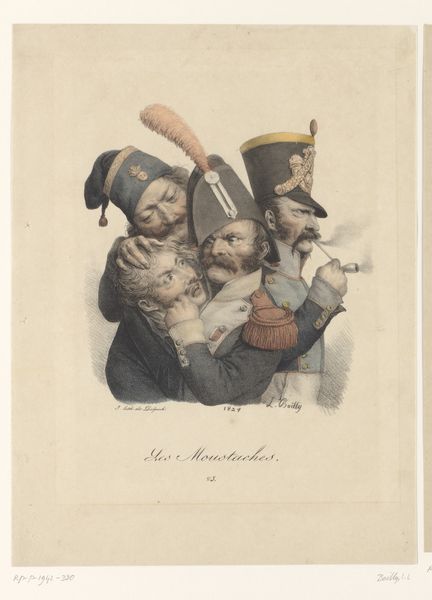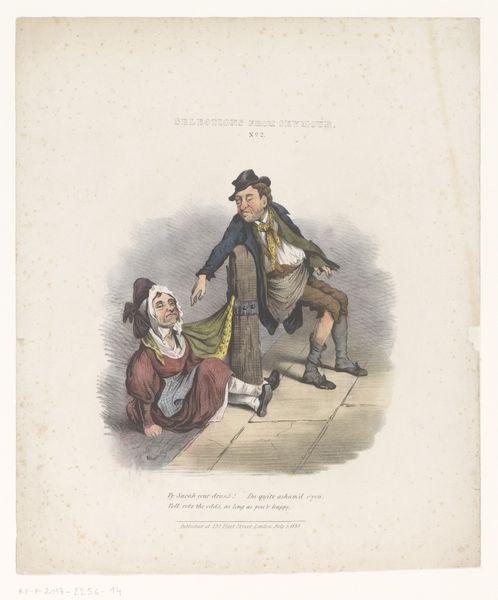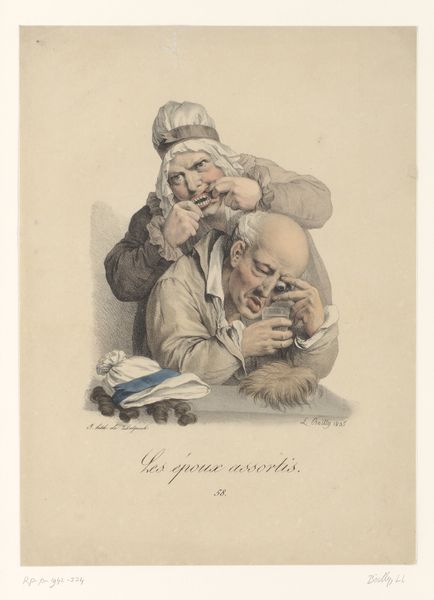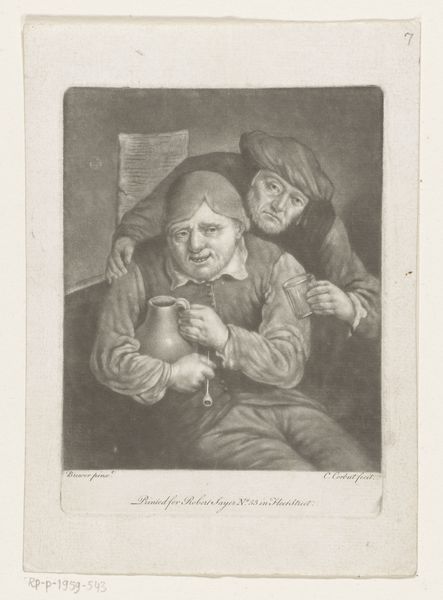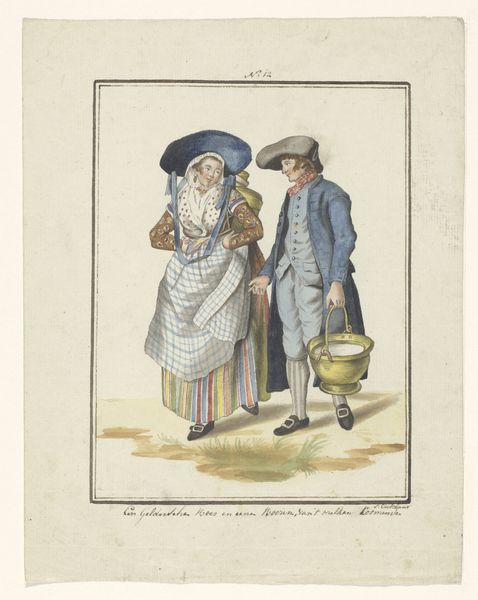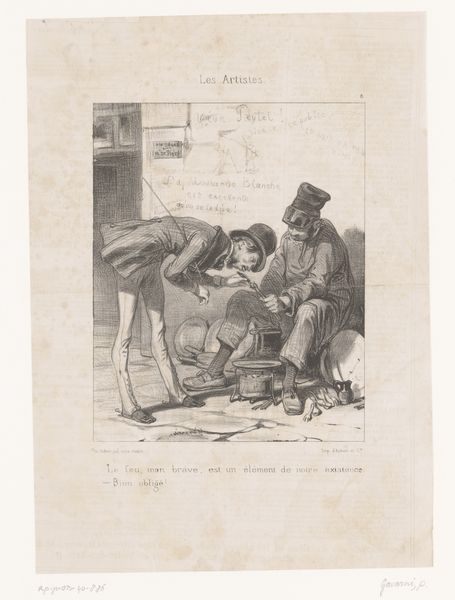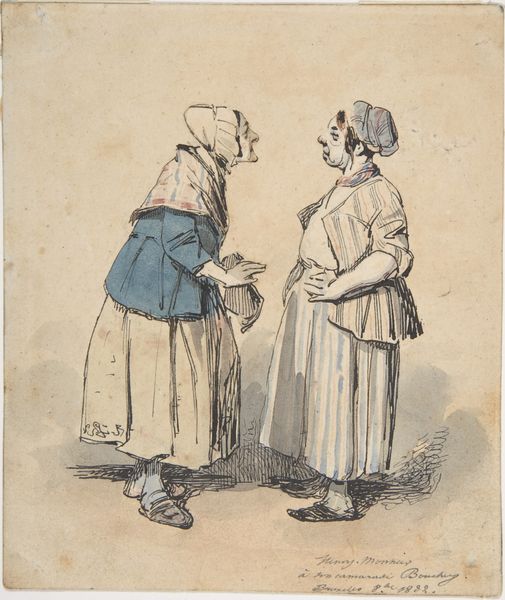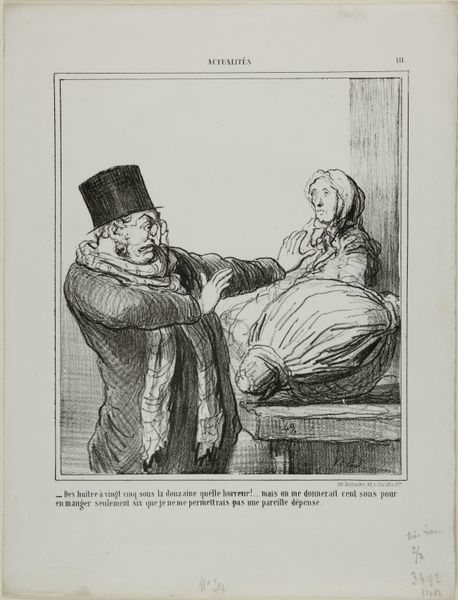
aquatint, print, etching, ink
#
portrait
#
aquatint
# print
#
etching
#
caricature
#
caricature
#
ink
#
romanticism
#
portrait drawing
#
genre-painting
Dimensions: height 324 mm, width 259 mm
Copyright: Rijks Museum: Open Domain
Louis Léopold Boilly created this print called "Avarice" using etching and aquatint. It presents a potent commentary on social values and the period in which it was made. Boilly was working in France during and after the French Revolution, a time of enormous social upheaval. The image creates meaning through exaggerated features of the man and woman, and a clear emphasis on money. The term avarice is an overtly critical label for this behaviour. The print can be seen as a critique of bourgeois values that arguably led to social inequality. The artist invites the viewer to reflect on the ethics of wealth accumulation. Art historians study prints like these to explore the social and economic dynamics of 18th and 19th-century France. By looking at sources from the time, such as newspapers, pamphlets, and other visual art, we can better understand the nuances of this artistic commentary. Art is always contingent on social and institutional context.
Comments
No comments
Be the first to comment and join the conversation on the ultimate creative platform.
